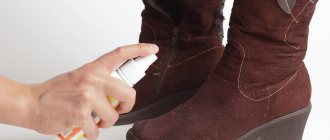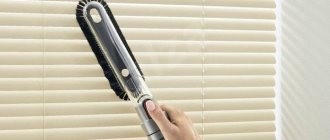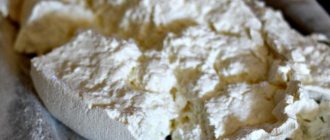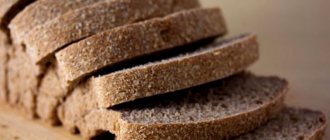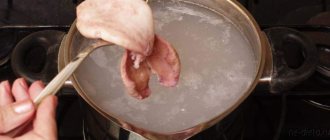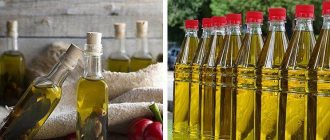Coronavirus, depending on the material of the surface, can remain active on it from several hours to several days (). Washing with soap allows you to wash away and remove pathogens, but only special disinfectants can destroy the virus. Upon contact with them, pathogen particles die within 30 seconds to several minutes, depending on which components are the basis of the drug (). How often should disinfectants be used? What methods of application exist and how exactly can surfaces be treated against coronavirus?
How often to treat surfaces is described by the recommendations of Rospotrebnadzor
. According to clause 4.8 at enterprises:
- Wet cleaning using disinfectants that can kill viruses should be carried out every day or every shift.
- Handles, switches, tables, railings, handrails, office equipment and any other surfaces that people constantly touch with their hands should be disinfected every 2-4 hours.
You can carry out local disinfection of contact surfaces more often, as often as you want, but not less often than the specified interval. In addition, if there is a threat of coronavirus, it is necessary to ventilate the premises every 2 hours.
note
Recommendations for the frequency of surface treatment may vary depending on your type of activity. For organizations that work with people, disinfection after each client may be mandatory. Look for relevant recommendations from Rospotrebnadzor. For example, in the documents section on the official website stopcoronavirus.rf.
Preparation
Disinfection should be carried out immediately after the patient has fully recovered. In many ways, the procedure is similar to spring cleaning. It is important to clean absolutely all surfaces. Before disinfection, all children and pets must be removed from the house to eliminate the negative impact of the disinfectant on their bodies.
You should start from the furthest rooms, gradually approaching the bathroom and kitchen. All items must be removed from each room where cleaning is carried out and processed separately. After disinfection, it is recommended to pack them in separate clean bags until the procedure is completely completed. Absolutely everything needs to be processed.
All furniture should be moved from its usual places. It will be possible to return it only after complete processing of both the surfaces hidden behind it and itself. At the same time, you need to take everything out of it in advance in order to disinfect the inside.
How to treat surfaces against coronavirus: recommendations from Rospotrebnadzor
Recommendations regarding how to treat surfaces against coronavirus
Rospotrebnadzor describes the composition and minimum required concentration of active ingredients in products that can fight Covid. These include:
- Tertiary amines 0.05%
- Isopropyl alcohol 70%
- Hydrogen peroxide 3%
- Ethyl alcohol 75%
- Sodium salt of dichloroisocyanuric acid 0.06%
- Calcium (sodium) hypochlorite 0.5%
- Dichloranthine 0.005%
- Quaternary ammonium compounds 0.5%
- Chloramine B 3.0%
- Polymer derivatives of guanidine 0.2%
There is also a list
Russian manufacturers of disinfectants recommended by Rospotrebnadzor.
Whether a particular disinfectant is suitable for eliminating coronavirus pathogens can always be found out from its instructions. The full composition of the product is always indicated there, which can be checked against the list given above, the method of use and the necessary precautions. Instructions can be found on the packaging of the product itself, or online. Now you can easily find official instructions from Rospotrebnadzor for most disinfectants online.
How to disinfect an apartment - traditional methods
The most popular means are almost always traditional methods, regardless of the type of cleaning. With their help, you can quickly and effectively disinfect your apartment, getting rid of all germs. There are several most suitable means.
How to disinfect an apartment using natural means - video:
Vinegar
Disinfection with vinegar is quite effective and does not require a lot of money. Getting rid of viruses this way will be very easy.
- Mix vinegar with water (1 to 2).
- Pour into a spray bottle.
- Spray on all surfaces and wipe them.
The kitchen and bathroom are the best places to use this method. You need to use vinegar to clean everything in these rooms. Particular attention should be paid to the laundry basket. It is allowed to add salt in an amount equal to the volume of vinegar.
Bleaching powder
You can buy bleach at any household stores. It will help quickly disinfect rooms after any illness.
How to make the mixture:
- Stir lime (1 kg) in water (9 l).
- Wipe all surfaces.
This mixture is best for cleaning the toilet and bathroom.
Hydrogen peroxide
A mixture of hydrogen peroxide and water shows maximum effectiveness not in cleaning furniture or surfaces, but in washing clothes. You can also rinse your toothbrush with it.
- Heat the peroxide mixture (100 g per 12 liters of water) to 60°C.
- Place the laundry in there and boil for 15 minutes.
After this, things can be rinsed with conditioner. They need to be dried only in a disinfected room.
Sun
A very simple and affordable way to disinfect your apartment is the sun. Therefore, all things that can be placed outside (for example, on a balcony) must be taken out into the sun. In a short time, all germs will be destroyed. However, after this, it is recommended to use other folk remedies to eliminate bacteria in places out of reach of the sun.
Tea tree oil
The use of oil is very effective. It can be applied in two ways. They show approximately the same effectiveness and are easy to use. The oil is excellent against fungus.
- Place a few drops on cotton balls, place them in the vacuum cleaner's dust container and begin cleaning.
- Dilute a spoonful of oil in a glass of water and spray the mixture with a spray bottle.
These methods can be used to clean both main surfaces and a computer, keyboard, TV or other equipment.
Linseed oil
When cleaning an apartment after illness, you can use linseed oil. It does its job well and is well suited for wooden surfaces.
- Mix with water (1 tablespoon per glass).
- Pour into a spray bottle.
- Apply to surfaces and wipe.
What products can be used to disinfect an apartment?
If you want to disinfect your living space, carefully consider the choice of disinfectant, since their composition is very different, so some disinfectants may be much stronger or weaker than others in relation to various infectious agents and pathogens. Below we offer you the 5 best remedies that will help cope with pathogens and ensure effective prevention of infectious diseases during epidemics or the illness of one of the family members.
| Photo | Name | Rating | Price | |
| #1 | "Dyulbak DTBL" | ⭐ 100 / 1003 — votes | Link to the product | |
| #2 | "Deso-treez" | ⭐ 99 / 1001 – voice | Link to the product | |
| #3 | "Edel" | ⭐ 97 / 100 | Link to the product | |
| #4 | "Bakterokos" | ⭐ 95 / 100 | Link to the product | |
| #5 | "Deo-bacter" | ⭐ 91 / 1001 - voice | Link to the product |
Which disinfectant would you choose or recommend?
Take the survey
"Deo-bacter"
This is a universal product in the form of a gel concentrate, designed for washing and disinfecting various surfaces, objects, children's toys and equipment. It contains alkyldimethylbenzylammonium chloride, which not only perfectly removes protein deposits and any types of contaminants, but also effectively copes with most known strains of bacteria, viruses and fungi that cause influenza, pneumonia, intestinal infections and other infectious diseases of moderate and severe severity. The product has a low degree of toxicity, does not cause irritation, does not damage furniture and has low corrosive activity.
"Deo-bacter"
Main characteristics:
- name – “Deo-bacter”;
- active ingredients – alkyldimethylbenzylammonium chloride;
- scope of application – residential premises of any type, utility warehouses, educational and children's institutions;
- release form – concentrate for preparing a solution;
- safety – non-toxic;
- average cost – 679 rubles per 1 liter.
pros
- costs a little less than other professional disinfectants;
- has no pungent odor, does not contain chlorine;
- processing can be carried out in the presence of other family members and pets;
- good cleaning properties;
- does not damage furniture;
- disinfects apartments well during epidemics of influenza and ARVI, as well as intestinal infections.
Minuses
- weak activity against tuberculosis bacteria, as well as fungi and dermatophytes;
- leaves whitish stains even after rinsing with water (you need to wipe the surface with a damp cloth several more times).
The concentrate for preparing the Deo-bacter solution is a good choice for preventive (seasonal) and regular disinfection of apartments, but during the peak period of severe infectious diseases it is not suitable due to its weak antibacterial and antimycotic activity.
"Bakterokos"
“Bakterokos” is a unique disinfectant designed for disinfection and disinfection of air, in the form of an aerosol. The product is produced in France and, in addition to quaternary ammonium compounds, contains natural menthol oil, which perfectly deodorizes the air and is a natural antiseptic. The drug provides the possibility of preventive disinfection during the seasonal increase in the incidence of influenza and ARVI and prevents the spread of viruses, significantly reducing the risk of infection. It can be used both at home (to disinfect the air in rooms, especially in those in which patients are located), and on the street or in crowded places where the risk of contracting an infection is maximum.
"Bakterokos"
Main characteristics:
- name – “Bakterokos”;
- active ingredients – ethyl alcohol, alkyldimethylbenzylammonium chloride;
- scope of application – residential premises of any type, crowded places (cinemas, shops, cafes, museums, etc.);
- release form – aerosol for disinfection and air disinfection;
- the average cost is 1260 rubles per 405 ml.
pros
- a very convenient form of aerosol, which can be sprayed both vertically and horizontally, and the bottle is convenient to take with you anywhere;
- protects against influenza viruses and acute respiratory infections and prevents their spread;
- has weak antibacterial activity against some aerobic and anaerobic bacteria;
- deodorizes the air well (pleasant mint smell);
- It is used sparingly.
Minuses
- practically does not kill most dangerous bacteria and fungi;
- high price.
Bacterokos spray is a very convenient and easy-to-use air disinfectant, which is excellent for air disinfection during seasonal outbreaks of influenza and ARVI, but, of course, it is not suitable as a strong disinfectant due to its weak bactericidal activity.
"Edel"
“Edel” is a powerful disinfectant that is available in the unusual form of wet wipes. It contains several disinfectants and is suitable both as a means for disinfecting small surfaces and as a skin antiseptic (for example, in public places with large crowds of people). Using these wipes, you can daily clean door handles, switches, mobile phones, remote controls, keyboards and other small surfaces that we come into contact with most often.
"Edel"
This is also an excellent option to improve the quality of complex disinfection, since with the help of such wipes you can treat even the most inaccessible places where viruses and bacteria can remain.
Main characteristics:
- name - "Edel";
- active ingredients – alkyldimethylbenzylammonium chloride, guanidine, isopropyl alcohol;
- scope of application – treatment of small surfaces and hands;
- release form – disinfectant wipes;
- average cost – 620 rubles for 80 pcs.
pros
- very convenient to use and take with you;
- are not inferior in effectiveness to other disinfectants;
- wide range of applications (can be used to disinfect hands and surfaces);
- the composition contains functional additives that soften the skin of the hands and prevent the skin from drying out;
- has a prolonged disinfectant effect for several hours (at least 4-5 hours);
- do not cause allergies;
- full spectrum of antiviral, bactericidal, antimicrobial and antimycotic activity.
Minuses
- suitable only for local disinfection of small surfaces;
- have a strong smell of alcohol.
Edel wipes are not only a highly effective disinfectant, but also an excellent addition to preventive measures during seasonal outbreaks of viral diseases.
"Deso-treez"
This is a professional disinfectant that is used not only in everyday life for comprehensive and high-quality disinfection of residential premises, but also in medical and children's institutions, where the risk of spreading infections is maximum due to the high density of crowds. This is a concentrated drug that belongs to class 4 of low-hazard substances, so it does not require the use of personal protective equipment and isolation of other family members during cleaning. The product is especially active against bacteria, viruses, dermatophytes, including the causative agents of tuberculosis, polio, as well as nosocomial infections, which are usually resistant to the effects of most disinfectants.
"Deso-treez"
The working solution can be stored for about 1.5 months without losing its properties, so within 40-45 days after preparation it can still be used to treat dishes, utensils, equipment, trash cans and carry out comprehensive preventive cleaning.
Main characteristics:
- name – “Deso-triz”;
- active components – quaternary ammonium compounds, guanidine;
- scope of application – residential premises of any type, household warehouses, catering organizations, medical institutions (including neonatology departments);
- release form – concentrate for preparing a solution;
- safety – class 4 low-hazardous substances;
- average cost – 990 rubles per 1 liter.
pros
- does not have mutagenic or teratogenic effects, does not irritate mucous membranes, respiratory organs and skin;
- suitable for disinfection of children's and medical institutions, including neonatology departments;
- the prepared solution remains stable for 1.5 months;
- is used sparingly;
- destroys a wide range of infectious pathogens, including helminths and other pathogens of parasitic infections.
Minuses
- not identified.
The “Deso-Triz” product is one of the most popular and sought-after disinfectant solutions, which is used in their work by hairdressers and nail technicians, catering workers and representatives of other professions whose work requires maximum sterility. If you have a seriously ill person at home, or an epidemic of an infectious disease is raging around, disinfection with this solution is an effective and efficient way to prevent infection of other family members.
"Dyulbak DTBL"
This product is most often used to disinfect hospital premises in medical institutions, but it can also be used to disinfect apartments, cottages and houses, since it belongs to low-hazard substances (class 4). It does not need to be washed off, and there is no need for subsequent ventilation, which expands the possibilities of its use and makes disinfection very quick and easy. The concentrate has a pronounced bactericidal and antiviral effect, including against pathogens of hepatitis, HIV infection, tuberculosis, and also exhibits fungicidal activity, especially for infections caused by fungi of the genus Candida and Trichophyton.
"Dyulbak DTBL"
This is one of the few products that is suitable for disinfecting eggs (used mainly in catering units), and perfectly removes mold without calling a special team.
Main characteristics:
- name - "Dulbak DTBL";
- active ingredients – didecyldimethylammonium chloride 4.5%, alkaline salts, surfactants;
- scope of application – residential premises of any type, household warehouses, catering organizations, medical institutions, catering units;
- release form – concentrate for preparing a solution;
- safety – class 4 low-hazardous substances;
- average cost – 1100 rubles per 1 liter.
pros
- destroys a wide range of pathogens of dangerous infectious diseases;
- does not require rinsing;
- no need to ventilate the apartment after treatment;
- suitable for disinfecting eggs (eggs are one of the main sources of salmonella);
- destroys mold;
- disinfection can be carried out in the presence of children and pets;
- no pungent odor.
Minuses
- not identified.
"Dulbak DTBL" today is one of the most effective disinfectants for premises of any type, including medical institutions (the solution is used, among other things, for sterilizing medical instruments). The product does not require rinsing and is completely safe for children and animals, while it copes well with all known pathogens, including the causative agents of very dangerous infectious diseases.
Video - How to protect your apartment from coronavirus
Disinfecting an apartment can be a very simple task if you follow all the rules and choose the right products. If you have a need to disinfect your home, we advise you to listen to our recommendations and be sure to follow precautionary measures, and if it is impossible to disinfect yourself, immediately contact the appropriate services.
Special equipment
Special devices show good efficiency. They are harmless, which is why they can be used in homes with children and animals. You can use them regularly.
Humidifier
Popular device. Often it is used not even after an illness, but just like that. It humidifies the air, saving residents from inhaling harmful microbes. When using, it should be filled with clean water.
Salt lamp
You can easily get rid of the infection using a salt lamp. It creates ions that spread through the air, which destroy all harmful bacteria. At the same time, the air becomes very healthy, because the room is saturated with elements of sea salt. It is effective only in rooms whose area is less than 10 square meters. m.
UV lamp
The use of ultraviolet light for disinfection has long been practiced in hospitals. You can carry out a similar procedure yourself at home without any problems. It is advisable to purchase a portable UV lamp. When processing, you should cover all things with a blanket and walk around the room with a lamp for 15 minutes. It is recommended to leave the room completely empty so that nothing interferes with the effects of rays on the walls, floor and ceiling.
How do antiseptics differ from disinfectants?
Both are used for antimicrobial treatment. Only antiseptics (sanitizers) are used for hands, and disinfectants are used for household surfaces. Thus, the difference between them is very conditional.
Sanitizer is an alternative to soap for maintaining hygiene. However, when it comes to preventing the spread of infectious diseases, nothing beats “old-fashioned” hand washing.
It is not always possible to wash your hands properly. The most correct approach is to always have a bottle of antiseptic with you, which you can use to treat your palms at any time.
It is worth remembering that not all antiseptics kill germs - some only suppress their growth.
Chemicals
Special cleaning disinfectants show maximum effectiveness, but can cost a lot of money. They are used for any things and surfaces, since the composition can rarely harm any material or substance. But before use, you need to read the instructions to know how the solution works.
Air disinfection in an apartment - video:
The greatest effectiveness is shown by:
- "Monochloramine" . Suitable for children's clothes and dishes. You need to soak the item in it for half an hour or an hour, and then rinse. Helps with flu, tuberculosis or fungus.
- "Sanita". Special paste. Helps clean dishes, sink and bathtub.
- "Shine" . Powder for cleaning plumbing fixtures. Helps remove germs in the most difficult to reach places.
- "Whiteness" . The most famous remedy. Very cheap and effective. Suitable for the bathroom, toilet, and also for washing bed linen.
- "Squirrel". Powder used for washing clothes. Soaking time – 15 minutes.
The use of other similar means is permitted.
How to disinfect an apartment: step-by-step instructions
It doesn’t matter for what reason you needed to disinfect your home: the algorithm of actions will be the same in all cases. A common mistake many make when carrying out such work is the lack of an integrated approach. According to experts, more than half of people believe that washing furniture and floors with a special solution with the addition of a disinfectant is enough to get rid of pathogenic bacteria. This is a completely wrong approach, since viruses and germs can live on all surfaces, including those with which a person does not directly contact. If you want to ensure that the apartment fully complies with all sanitary and hygienic indicators and is safe to stay in, we advise you to use our instructions.
Step 1
You should start with regular dry and wet cleaning, which will help remove excess dirt and dust from the surface and ensure maximum interaction of the disinfectant with the surface. Carpets and rugs (if any) should be thoroughly vacuumed and shaken out.
Step 1: Remove dust and dirt from surfaces
Step 2
Clean all upholstered furniture and toys with a vacuum cleaner, and then treat with special products or steam. Toys without batteries can be washed at a temperature of 40-60°C followed by steam treatment (if the washing machine is equipped with this mode). A steam generator can also be used to disinfect down pillows and blankets, but this measure will not cope with all pathogenic microorganisms, so it is best to entrust this type of product to professionals. The mattress cover should be washed in the hottest possible water, treated with steam and ventilated in fresh air for 1-2 hours.
Step 2: Steam the furniture
Step 3
Solid furniture made of wood, laminated chipboard or MDF must be treated with a warm soda solution, soap solution (use 72.5% laundry soap) or special preparations based on chlorine and other disinfectants. Do not forget that absolutely all hard surfaces should be disinfected with this solution: cornices, the top of cabinets, chairs, sports corners, shelves, etc.
Step 3: Treat the hard surface with a disinfectant
Step 4
Use an alcohol solution or a pharmaceutical antiseptic (chlorhexidine, furatsilin, hydrogen peroxide) to treat the case of a mobile phone, keyboard, remote control, door handles and other objects and surfaces that you most often touch with your hands. Remember that these items are the main accumulation of bacteria and viruses in any living space.
Step 4. Use an alcohol solution or pharmaceutical antiseptic to treat your phone, keyboard, remote control and other frequently used items.
Step 5
Carry out a thorough cleaning using disinfectants and antibacterial agents in the kitchen. Remove all contaminants and treat the stove, oven, microwave, grill and barbecue grates, and home smokers. Wash the refrigerator and wipe it with a weak solution of vinegar (vinegar not only destroys all types of microorganisms, but also copes well with odors, and also gives a beautiful shine to glass shelves). Wash the ventilation grille with soapy water. Clean the sink thoroughly.
Step 5: Clean the kitchen
Step 6
Wash the trash can with an aqueous solution of bleach (you can use the ready-made preparation in Deo-chlor tablets).
Step 6: Clean out the trash can with a bleach solution.
Step 7
Place all outer clothing outside and leave to air in the open sunlight for 2-4 hours.
Step 7. Disinfect your outerwear
Step 8
If there are animals in the house, do not forget to disinfect the places where they are kept. It is imperative to wash and disinfect the tray and bedding/bed (stores sell special disinfectants for disinfecting animal care items), bowls, and toys. If your cat or dog wears clothes outdoors, they should also be washed regularly with pet-safe disinfectants.
Step 8. Disinfect animal areas
Step 9
Thoroughly clean all plumbing fixtures, including faucets, shower heads, and bathroom and toilet tiles. Wash the toilet brush and soak it for 1 hour in a bleach solution (a mandatory measure for complex disinfection of an apartment). A mandatory measure is also disinfection of the rubber cuff of the washing machine hatch, from the inside of which it is necessary to remove all dirt and treat it with a solution of vinegar or a special disinfectant. Wash the bathroom curtain at 90°C and steam if possible.
Step 9: Clean the bathroom
Step 10
Wash the handles of the front door, wipe the door leaf inside and out with a disinfectant solution, pour a chlorine solution on the mat under the door (you can put a rag generously soaked in the solution on top).
Step 10. Disinfect the front door handle, disinfect the door itself and the door mat
Step 11
The final stage is washing the floors throughout the entire apartment. You can add any industrial disinfectant or 1-2 tablets of bleach to the water. All hard surfaces on the walls are treated with the same solution.
Step 11. As a final step, wet clean the floors
After disinfection, you should leave the room, first opening all windows, and thoroughly ventilate the apartment, especially if you used products containing chlorine.
Video - Air disinfection in the apartment
How the virus spreads: briefly about the main thing
To answer the above questions, you first need to remember how viruses similar to COVID-19 spread:
- airborne (when droplets of mucus and saliva when sneezing and coughing scatter like shrapnel at a distance of up to 2 meters);
- contact with contaminated surfaces and infected surfaces (when, after infection on the skin, a person touches his face and infection occurs through the mucous membranes of the nose, mouth and eyes);
- airborne dust (when the virus lands on dust particles that travel a long distance and enter the body through breathing).
The COVID-19 coronavirus can be transmitted by all of the above methods. This contributes to the high speed of its spread.
Household appliances can help in the fight against COVID-19
Some washing machines have disinfection or steam settings. Using these settings along with detergent chemicals, bleach and peroxide can kill germs. Drying clothes on the dryer's hot cycle for 45 minutes is also effective against certain viruses and germs.
Dishwashers
Such equipment with a disinfectant cycle must meet certain standards set by the department of consumer protection and rights. Certified dishwashers must achieve a final rinse temperature of 70 degrees and provide a minimum bacteria reduction of 99.999%. In the dishwasher, you can clean pet bowls, cleaning wipes, children's toys and more.
Household cleaners
Air purification devices are good assistants, but they should not replace thorough cleaning and disinfection. Some cleaners use ultraviolet light, which has been shown to kill pathogenic bacteria, but their effectiveness varies depending on the model. While some purifiers and air filters tout their ability to capture viruses, bacteria, and common allergens, they don't always tackle the problem effectively.
Steam generator
A steam cleaner is a good solution for cleaning and eliminating bacteria from items that cannot be washed in a washing machine. The steam can kill 99.9% of dust mites, including dangerous germs such as salmonella, staph bacteria and E. coli. Steam cleaners also remove dirt and stains from carpets, upholstery, draperies and other fabrics.
UV lamp
An ultraviolet or quartz lamp shines with rays with a wavelength of 205-315 nm. Such light is capable of destroying the structure of any microorganism, including coronavirus. Installation of such devices is recommended for processing clothing and premises.
To quartz a room using an ultraviolet lamp, you must perform the following steps:
- Prepare the premises. Limit the admission of people and animals. Keep plants away from direct sunlight
- Place the device so that the beams cover the area of the room as much as possible.
- For eye safety, wear safety glasses
- After turning on the lamp, keep people away from direct light.
Treatment of the house with ultraviolet light must be carried out for 30 - 40 minutes. After this, the room is ventilated. If there is a clear threat of infection, quartzing is recommended to be carried out in the morning and evening.
How to disinfect your living space?
In order to treat surfaces and utensils, cleaning and washing disinfectants are used. Such products must be safe for humans and approved for contact with food surfaces. Pursue from Amway belongs to the 4th class of low-hazard substances and can be used to treat food surfaces, including cutting boards, dishes and cutlery, as well as those surfaces that can come into contact with mucous membranes - for example, plastic children's toys. Watch the video: Pursue Amway easily copes with the problem of pollution in the home and prevents the development of infections.
Disinfection against the virus
Buying antibacterial wipes and cleaning solutions is a good idea, but not a drastic solution; in fact, they will not protect you from coronavirus or any other virus, 100%. This is because bacteria and viruses are two different microbes, and they are destroyed in different ways.
Coronavirus is an envelope virus, meaning that it is “wrapped” in a layer of fat that needs to be dissolved and destroyed.
Viruses are more resistant to disinfectant liquids, but can still be killed by them. Not all household cleaners contain germ-killing active ingredients. It is better if the label says: “Kills 99.9% of bacteria and viruses.”
In terms of preventing viral diseases, cleaning and disinfecting are different actions, but it is important to do both. Cleaning is the removal of the top layer of dirt, and disinfection is the destruction of bacteria and viruses. Bleach, vinegar, and other antimicrobial solutions kill germs that cause colds and flu. But there is not yet enough evidence to determine whether these disinfectants are effective against the COVID-19 strain.
Can Pursue be used to wash fruits and vegetables?
This is one of the common questions, because we often eat vegetables and fruits raw, just rinsing them with water, which means they can easily carry pathogenic microbes and bacteria. Pursue Concentrated Detergent is not intended for use on food products and is not recommended for washing fruits or vegetables. During intestinal epidemics, doctors advise against eating them raw, as it can be difficult for the body to digest them. In normal times, it will be enough to rinse them well under clean running water and pour over boiling water.


